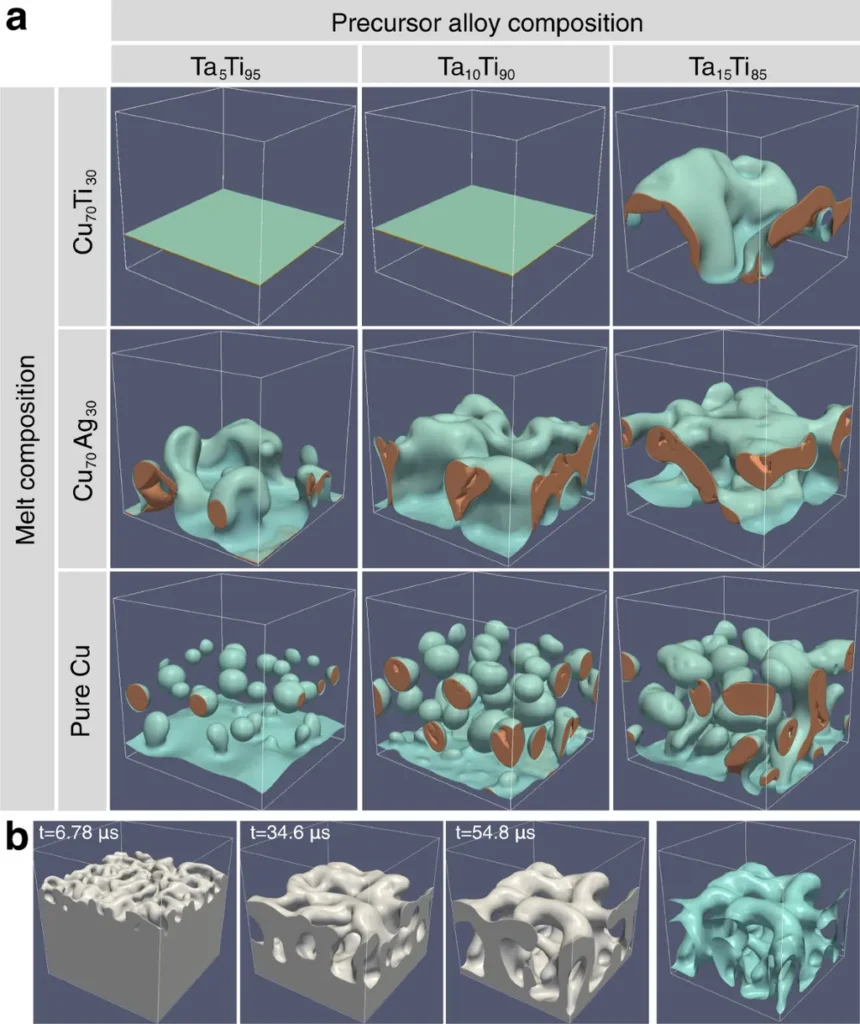In the ever-evolving landscape of materials science, a groundbreaking development has emerged from the Laboratory of Advanced Light Alloy Materials and Devices at Yantai Nanshan University. Led by Xu Bi, a team of researchers has engineered a novel porous alloy that could revolutionize the way we handle and utilize room-temperature liquid metals (RTLMs). This innovation, detailed in a recent study published in Materials Research Express, translates to “Materials Research Express” in English, holds significant promise for various industries, particularly in the energy sector.
At the heart of this research is a porous CuGa2 alloy, affectionately dubbed PCA by the team. This isn’t just any ordinary alloy; it’s a sponge-like material designed to efficiently absorb and remove excess or unwanted RTLMs, such as gallium and its room-temperature alloys, from a variety of substrates. Imagine a world where spills and excess liquid metals are no longer a headache but a mere inconvenience easily mopped up. That world is now a step closer to reality.
The secret to PCA’s effectiveness lies in its unique preparation method. Using an ultrasonic-enhanced wet/alloy strategy, gallium penetrates and reacts with a copper foam substrate, creating a material with a high pore density and volume of hydrochloric acid. This process, as Xu Bi explains, “allows us to regulate the pore density and volume of hydrochloric acid, which in turn enhances the RTLM absorption capacity of the PCA.”
The implications of this research are vast. In the energy sector, for instance, RTLMs are increasingly used in flexible electronics and soft robotics. However, their handling and containment have always been a challenge due to their liquid state at room temperature. PCA offers a solution to this problem, providing a high removal efficiency on different material surfaces, including wood, nitrile gloves, plastic, and glass.
But the benefits don’t stop at efficiency. PCA is also highly economical. It can be recycled and reused without losing its RTLM adsorption capacity or mechanical strength. This reusability factor is a game-changer, making PCA a cost-effective solution for industries dealing with RTLMs.
The potential applications of PCA are not limited to the energy sector. In flexible electronics, for example, PCA could be used in LED circuit editing, highlighting its potential in this burgeoning field. As Xu Bi puts it, “The convenience of using PCA in such applications is unparalleled.”
This research is more than just a scientific breakthrough; it’s a testament to the power of innovation and the potential of materials science to shape our future. As we stand on the cusp of a new era in technology, developments like PCA will undoubtedly play a pivotal role in driving progress and pushing boundaries. The future is porous, and it’s looking brighter than ever.

